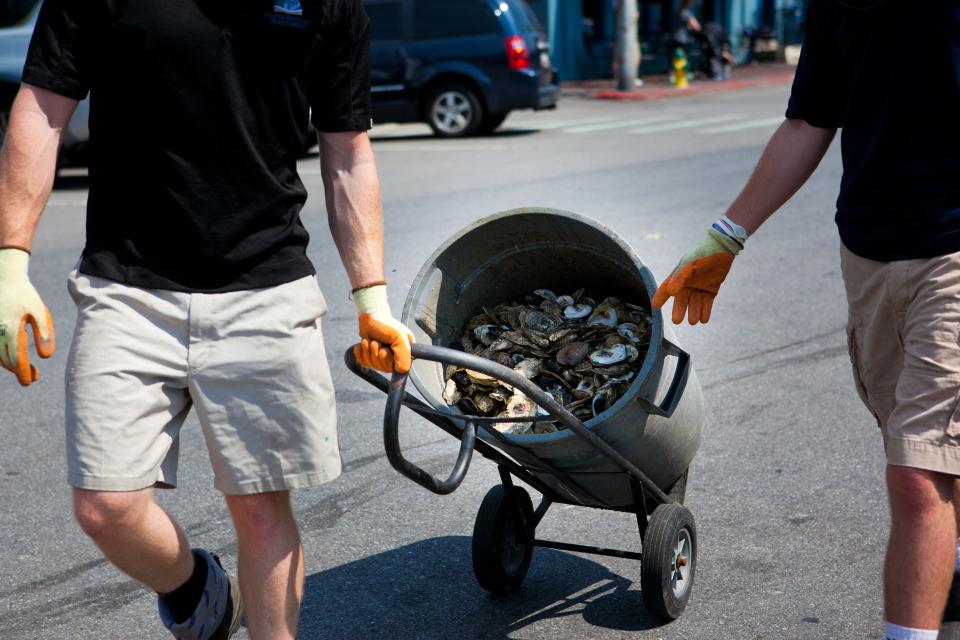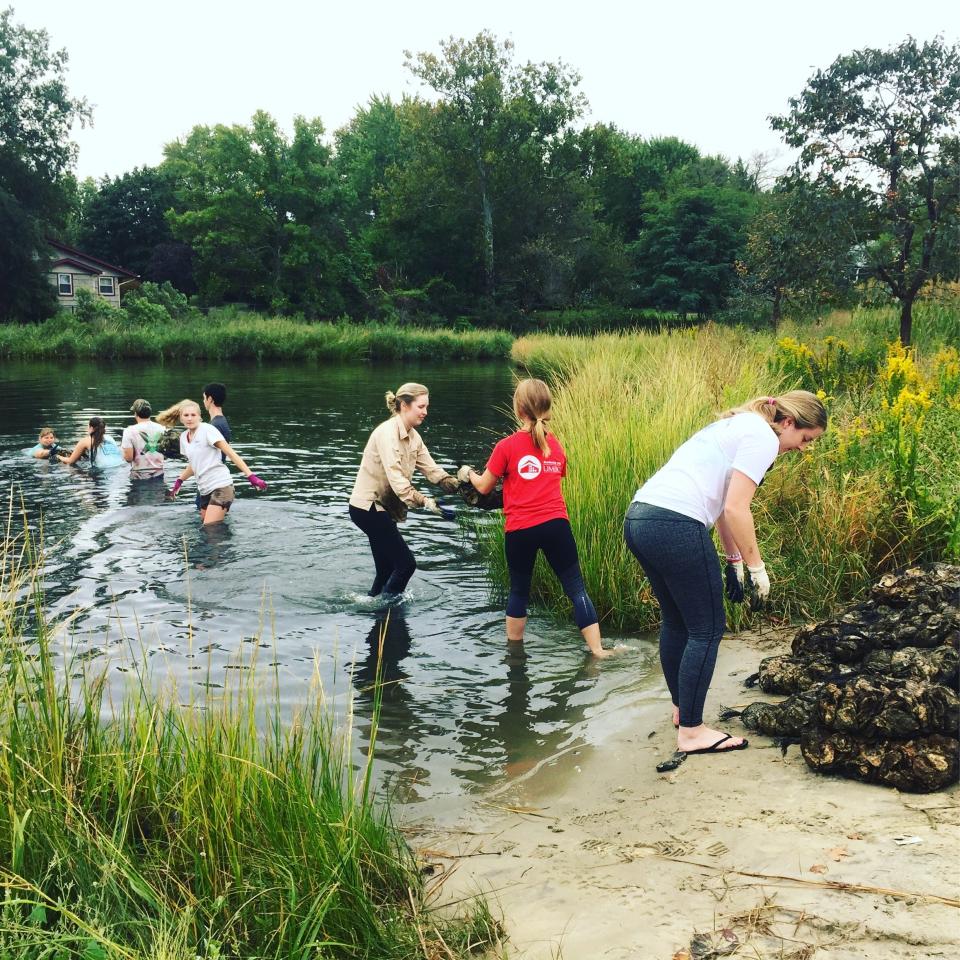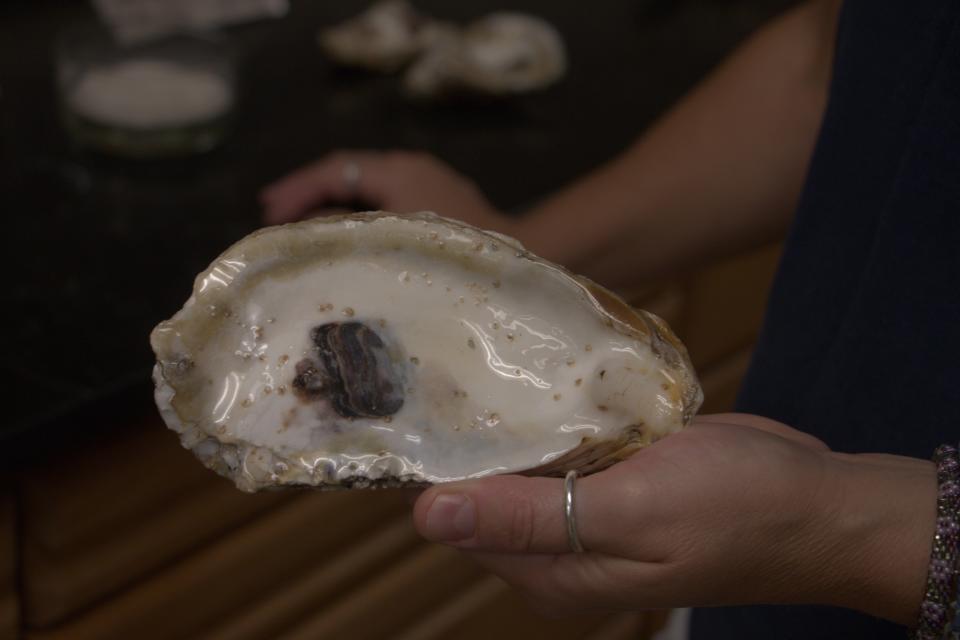Oysters enjoy 'prolific' year all around Chesapeake Bay. Here's what to know.
The Maryland Department of Natural Resources’ Fall Oyster Survey recorded a remarkable year for juvenile oysters in Maryland waters, finding prolific numbers throughout the Chesapeake Bay.
The survey’s spatfall intensity index, a measure of reproductive success and potential population growth for oysters, was 86.8 spat, or juvenile oysters, per bushel, nearly four times the 39-year median of 23.6 spat per bushel and the fifth highest in that timeframe.
“We have not recorded this extent of oyster spat recruitment in the fall survey in a generation,” said Department of Natural Resources Secretary Josh Kurtz. “Both the quantity and the wide distribution of spat throughout the Bay, including several areas where our biologists have rarely observed spat in nearly 40 years of results, are outstanding. We plan to build on these natural spatsets by continuing oyster restoration efforts and promoting aquaculture.”

This survey, which measures the population status of oysters in the Bay, marks the fourth consecutive year of above-median results for juvenile oysters, a promising sign for restoration efforts for the bivalve, which has faced precipitous population declines over the decades.
Healthy habitats across for oysters across the Chesapeake Bay

Aside from the spatfall intensity index, the department looks to see how widely young oysters are distributed throughout Maryland’s oyster habitat.
In 1997, the survey produced the highest index in the history of the survey at 277 spat per bushel, but the spatset of that year was concentrated in particular areas of the Chesapeake Bay: the eastern portion of Eastern Bay, the Miles River, the northeast portion of the lower Choptank River, and in parts of the Little Choptank and St. Mary's rivers.
By comparison, the 2023 survey found spat in areas where they are rarely observed, including in the upper reaches of Bay tributaries that are typically too brackish for strong oyster reproduction. The distribution of the 2023 spatset far exceeded prior spatsets.
The Potomac River and two of its tributaries, the Wicomico River and Breton Bay, in addition to the Patuxent River and the Tred Avon River, received a once-in-a-generation spatset.
Eastern Bay, where oysters have been in decline for over a decade, also saw a significant increase in spatset. Many of the areas that typically receive high spatsets did so again in 2023: the lower Eastern Shore, the lower Western Shore, Broad Creek and others.
This year, the department recorded spat at 50 out of 53 key bars, the primary sampling sites for the spat survey. Spat have not been recorded at this many key bars since 1985.
More on oyster conservation efforts 'Chesapeake Bay belongs to everyone': How Maryland is taking lead to protect it
Why the unprecedented oyster spat improvement?

Environmental conditions, such as adequate water salinity, play a role in successful oyster recruitment. This past year, salinity measurements have been above their long-term averages due to below-average rainfall in the watershed, providing ideal conditions for oyster recruitment.
While many factors played a part in the 2023 spatset, Maryland Department of Natural Resources scientists believe the considerable numbers and distribution recorded — in conjunction with the three previous years of above-average recruitment — are encouraging signs for ongoing management efforts.
“Oysters are unique in that they are environmental engineers, meaning they create their own essential shell habitat as they grow. This large influx of young oysters will help build a foundation for more oysters in the future," said Department of Natural Resources Shellfish Division Director Christopher Judy.
More on horseshoe crab conservation Horseshoe crabs lifeblood for watermen and health care, to get reprieve from harvesting
Bay oysters critical to ecosystem and economic engine for watermen

Eastern oysters, the species found in the Bay and parts of the Atlantic coast, are critical to the Chesapeake ecosystem.
They are an important food source and the reefs they form provide habitats for fish and crustaceans. Each mature oyster can filter gallons of water daily and consume algae, which removes excess nutrients and helps clarify the water.
Oyster harvesting is an economic engine for Maryland watermen, second only to crabbing in terms of dockside value. Over time, overharvesting, habitat loss, pollution and oyster diseases have decimated the population of oysters in the Bay, leading to intensive management practices aimed at bolstering the population.
The department works in consultation with the Oyster Advisory Commission to manage oysters in Maryland’s portion of Chesapeake Bay in an ongoing effort to increase the population and habitat as well as to facilitate long-term, sustainable oyster harvest. Following a three-pronged approach to restoration, the department protects 50% of the most productive oyster bars in sanctuaries, creates new opportunities for oyster aquaculture and utilizes a data-driven management strategy for public fishery areas.
Oysters reproduce by external fertilization, releasing their eggs and sperm into the water column when triggered by both temperature and the presence of gametes from other oysters. The more closely situated adult oysters are to each other, the greater the likelihood of successful fertilization.
New museum for downtown Salisbury: Downtown Salisbury getting new museum featuring Ward Museum pieces: Everything to know
Once the eggs are fertilized, they develop into free-swimming larvae and are subject to wind, tides, currents and a host of predators, such that only a minute fraction survive to settlement.
At that time, using a tiny foot, they seek out hard substrates, namely the shells of other oysters, on which to attach and remain for the rest of their lives. After attachment, the juvenile oysters are known as spat. By the following year, they have reached sexual maturity and are considered young adult oysters.
This article originally appeared on Salisbury Daily Times: Maryland sees 'prolific' year for oysters Chesapeake Bay. Here's why

